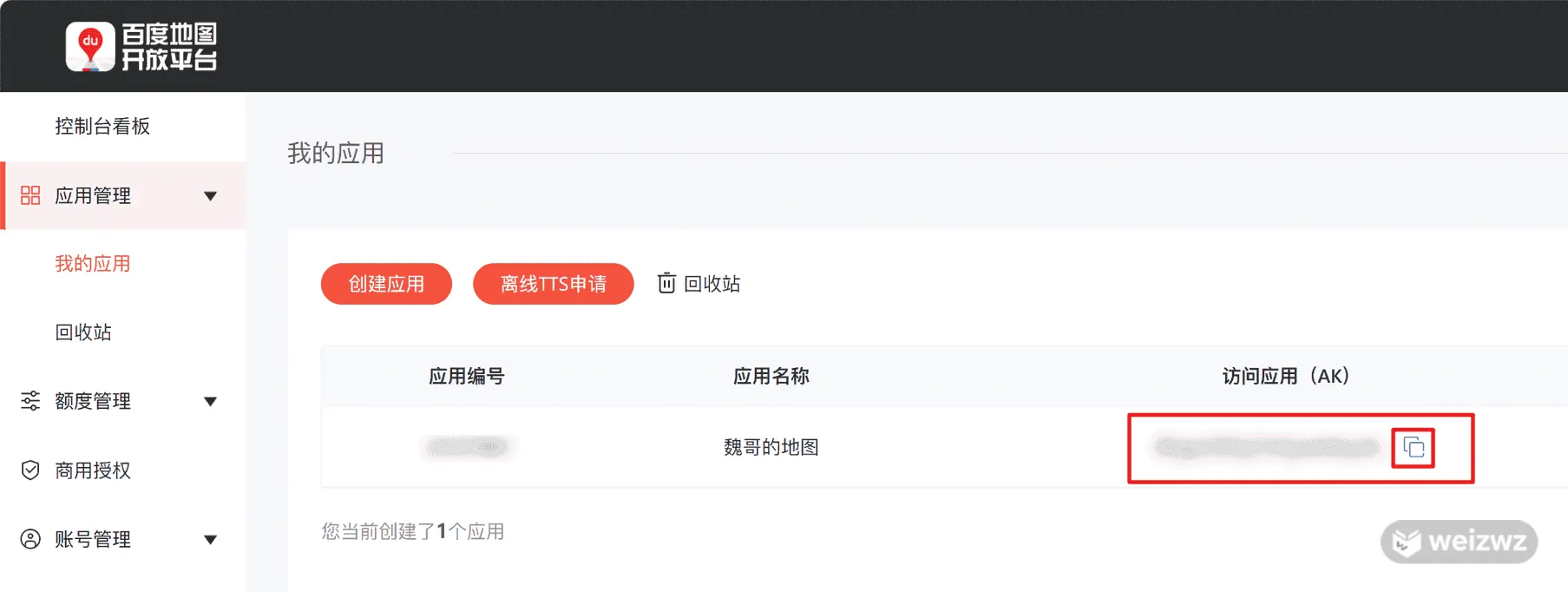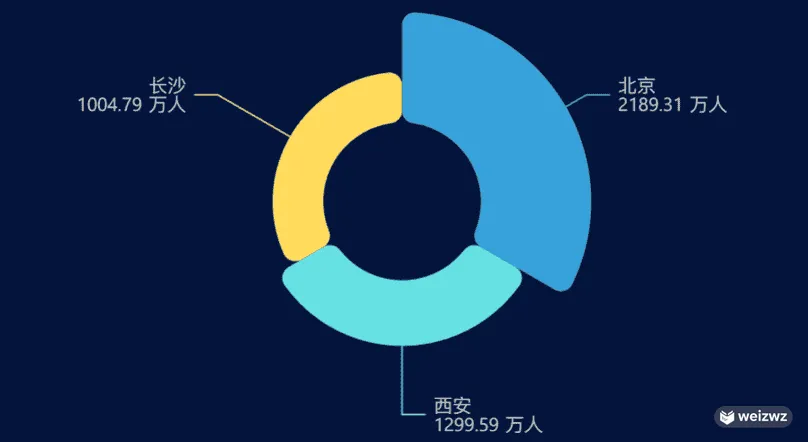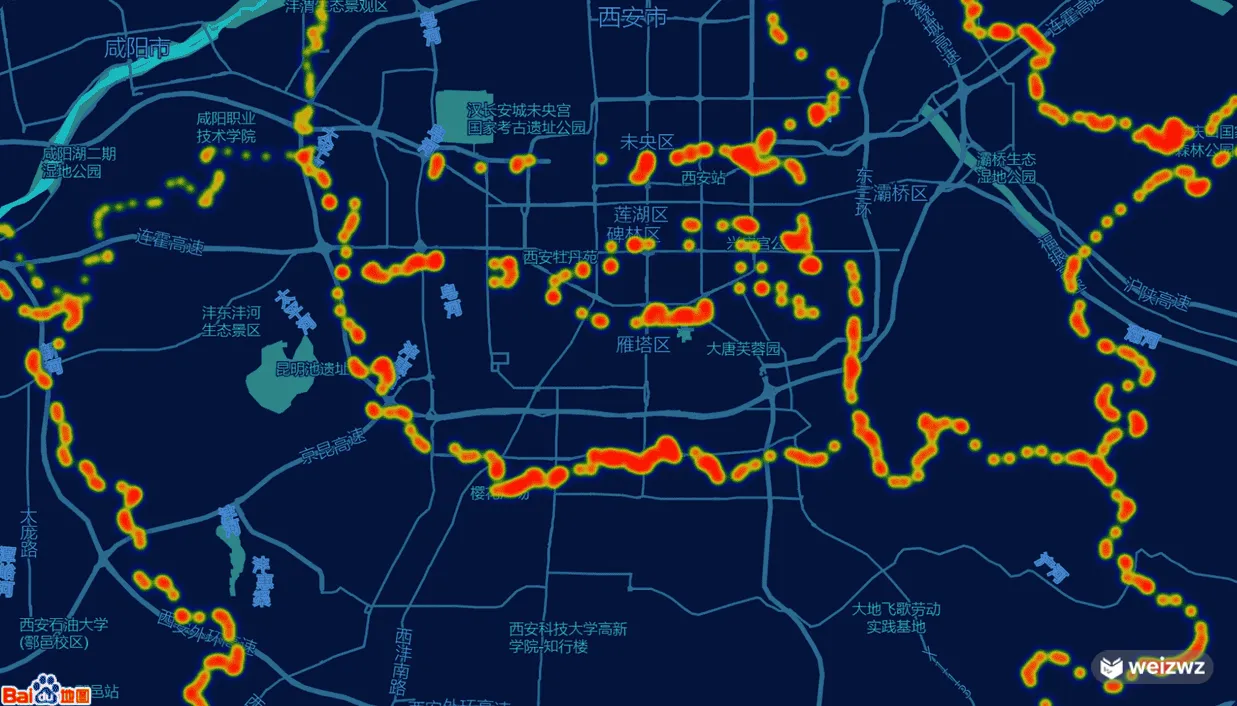主题
vue3+ts打开echarts的正确方式
实例项目使用 vite5 + vue3 + ts,项目地址 vite-vue3-charts,预览地址 https://weizwz.com/vite-vue3-charts
准备工作
1. 注册为百度地图开发者
官网地址,然后在 应用管理 -> 我的应用 里,创建应用,创建好后复制 AK

2. 在根目录的 index.html 里引入百度地图
html
<head>
<meta charset="UTF-8" />
<link rel="icon" type="image/svg+xml" href="/vite.svg" />
<meta name="viewport" content="width=device-width, initial-scale=1.0" />
<title>xxx</title>
<script type="text/javascript" src="https://api.map.baidu.com/api?v=3.0&ak=你复制好的AK"></script>
</head>在 head 里引入,是为了提前加载进来
3. 安装 echarts
bash
npm i echarts -S封装
1. 增加ts对百度地图的支持
修改 .eslintrc.cjs,加入对百度地图的支持
js
module.exports = {
// 其他省略
globals: {
BMap: true
}
}2. 全局注册 echarts
修改 main.ts
ts
// 引入 echarts
import * as echarts from 'echarts'
import themeJSON from '@/assets/weizwz.json'
echarts.registerTheme('weizwz', themeJSON)
const app = createApp(App)
// 全局挂载 echarts
app.config.globalProperties.$echarts = echarts3. 封装 echarts
src/components 下新建 chart 文件夹,并在其下新建 index.vue,封装如下
html
<script setup lang="ts">
import { onMounted, getCurrentInstance, defineExpose, ref } from 'vue'
defineOptions({
name: 'WChart'
})
// defineExpose 让父组件可调用此方法
defineExpose({
setData
})
// 组件传参
const props = defineProps({
width: {
type: String, //参数类型
default: '100%', //默认值
required: false //是否必须传递
},
height: {
type: String,
default: '10rem',
required: true
},
option: {
type: Object,
default: () => {
return {}
},
required: true
},
// 初始化之前的工作,比如加载百度地图相关数据
initBefore: {
type: Function,
required: false
},
// 初始化之后的工作,比如添加百度地址控件
initAfter: {
type: Function,
required: false
}
})
let chart: { setOption: (arg0: Record<string, any>) => void; resize: () => void }
const wchart = ref(null)
//声明周期函数,自动执行初始化
onMounted(() => {
init()
// 监控窗口大小,自动适应界面
window.addEventListener('resize', resize, false)
})
//初始化函数
function init() {
// 基于准备好的dom,初始化echarts实例
const dom = wchart.value
// 通过 internalInstance.appContext.config.globalProperties 获取全局属性或方法
let internalInstance = getCurrentInstance()
let echarts = internalInstance?.appContext.config.globalProperties.$echarts
chart = echarts.init(dom, 'weizwz')
// 渲染图表
if (props.initBefore) {
props.initBefore(chart).then((data: Record<string, any>) => {
setData(data)
if (props.initAfter) props.initAfter(chart)
})
} else {
chart.setOption(props.option)
if (props.initAfter) props.initAfter(chart)
}
}
function resize() {
chart.resize()
}
// 父组件可调用,设置动态数据
function setData(option: Record<string, any>) {
chart.setOption(option)
}
</script>
<template>
<div ref="wchart" :style="`width: ${props.width} ; height: ${props.height}`" />
</template>
<style lang="scss" scoped></style>使用
1. 使用 echarts 普通图表
示例:使用玫瑰环形图
html
<script setup lang="ts">
import WChart from '@comp/chart/index.vue'
defineOptions({
name: 'ChartLoop'
})
// 正常 echarts 参数
const option = {
grid: {
top: '20',
left: '10',
right: '10',
bottom: '20',
containLabel: true
},
series: [
{
name: '人口统计',
type: 'pie',
radius: [50, 120],
center: ['50%', '50%'],
roseType: 'area',
itemStyle: {
borderRadius: 8
},
label: {
formatter: '{b}\n{c} 万人'
},
data: [
{ value: 2189.31, name: '北京' },
{ value: 1299.59, name: '西安' },
{ value: 1004.79, name: '长沙' }
]
}
]
}
</script>
<template>
<WChart width="100%" height="300px" :option="option" />
</template>
<style lang="scss" scoped></style>
2. 结合百度地图
示例:西安热力图
html
<script setup lang="ts">
import { reactive } from 'vue'
import WChart from '@comp/chart/index.vue'
// 注意需要引入 bmap,即 echarts 对百度地图的支持扩展
import 'echarts/extension/bmap/bmap'
// 热力数据,内容如:{ features: [ { geometry: { coordinates: [ [ [x, y] ] ] } } ]}
// 为什么这么复杂,因为是我从阿里地理数据下载的,地址 https://datav.aliyun.com/portal/school/atlas/area_selector
import xianJson from '@/assets/xian.json'
defineOptions({
name: 'ChartMap'
})
const option = {
animation: false,
backgroundColor: 'transparent',
bmap: {
// 地图中心点
center: [108.93957150268, 34.21690396762],
zoom: 12,
roam: true
},
visualMap: {
show: false,
top: 'top',
min: 0,
max: 5,
seriesIndex: 0,
calculable: true,
inRange: {
color: ['blue', 'blue', 'green', 'yellow', 'red']
}
},
series: [
{
type: 'heatmap',
coordinateSystem: 'bmap',
data: reactive([] as any[]),
pointSize: 5,
blurSize: 6
}
]
}
const initBefore = () => {
return new Promise((resolve) => {
// 处理数据
const arr = []
for (const item of xianJson.features) {
const positions = item.geometry.coordinates[0][0]
for (const temp of positions) {
const position = temp.concat(Math.random() * 1000 + 200)
arr.push(position)
}
}
option.series[0].data = arr
resolve(option)
})
}
const initAfter = (chart: {
getModel: () => {
(): any
new (): any
getComponent: { (arg0: string): { (): any; new (): any; getBMap: { (): any; new (): any } }; new (): any }
}
}) => {
// 添加百度地图插件
var bmap = chart.getModel().getComponent('bmap').getBMap()
// 百度地图样式,需要自己去创建
bmap.setMapStyleV2({
styleId: 'bc05830a75e51be40a38ffc9220613bb'
})
// bmap.addControl(new BMap.MapTypeControl())
}
</script>
<template>
<WChart width="100%" height="500px" :option="option" :initBefore="initBefore" :initAfter="initAfter" />
</template>
<style lang="scss" scoped></style>
